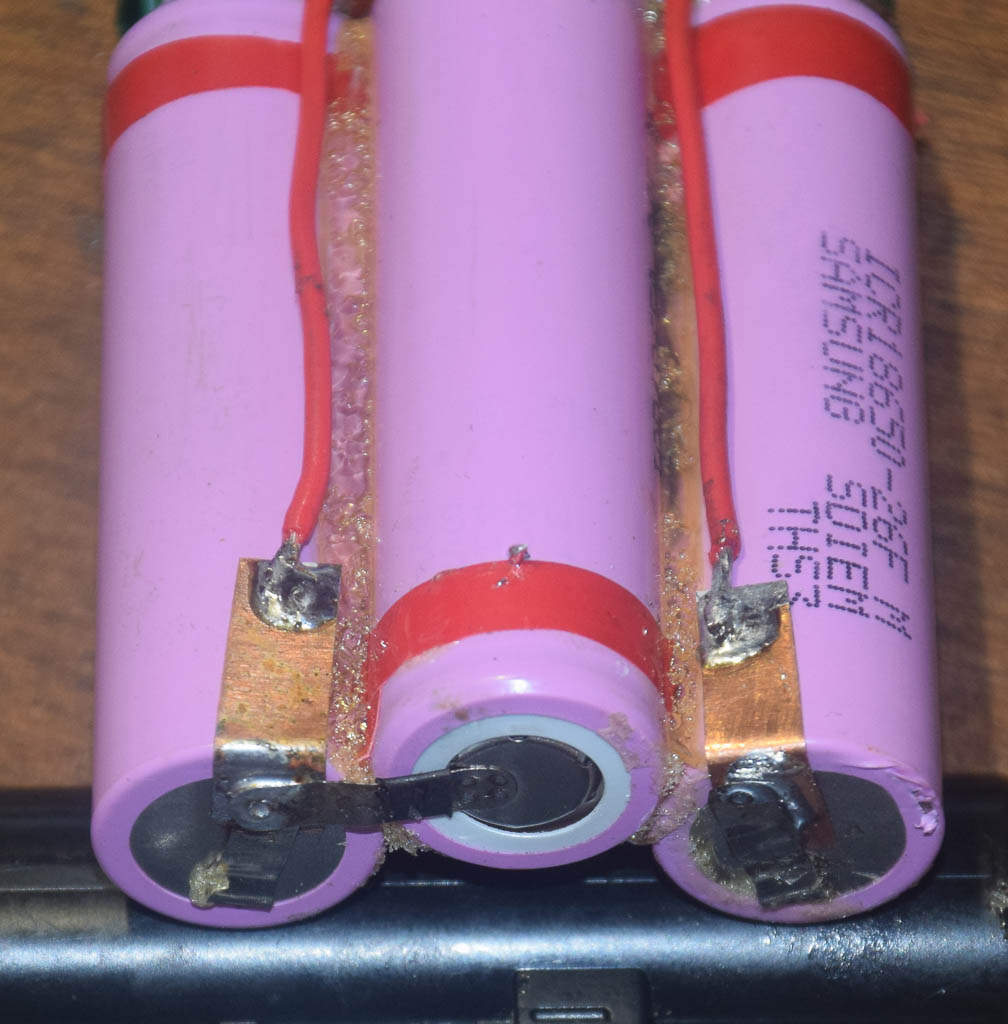| Joined: | Mon Apr 2nd, 2012 |
| Location: | South Lakeland, UK |
| Posts: | 4064 |
| Status: |
Offline
|
I recently (Feb 2018) re-celled a D3 battery, EN-EL4, new original EN-EL4's are about £150 in the UK, I can't afford that, ideally I want six cells minimum based on experience in the cold in Scotland, trying to photograph the Milky Way. I now have three good and one iffy battery. I am planning to create a power pack to power the camera in those conditions this next winter, that will avoid having to change batteries in the middle of a time lapse session and should be capable of powering the camera all night.
I decided to re-cell one of my casings of a fairly old EN-EL4, it was extremely challenging, I converted two D1 batteries many years ago to 18650 cells. That was difficult because the casings had to be modified, the cells would not fit in the casings but ten years on they were still good.
I use the 18650 cells in my dedicated Nichia UV 365nm lamp which I built.
I thought I wrote up the EN-EL4 project here... it uses three 18650 dumb cells, meaning the cells are unprotected. The protection is in the EN-EL4 casing and includes a chip which controls the balance between the cells which are NOT in series. The cells have to be balanced, again I don't want to go into the deeper reasons but it's another of the issues involved with this technology, cell balancing. The output from cells varies at differing rates as the cells age, the output from the cells has to be very similar otherwise one starts pushing another, causing overheating.
Cell balancing of Li-Ion cells is critical and probably the biggest challenge to creating large capacity batteries such as Geoff mentions for aircraft.
There is no room in the plastic casing for link wires, I had to use 0.007" copper foil about 8mm wide, which gives a cross sectional area of about 1.2mm/square area. The original conductors are 1.2mm sq cross sectional area. Anything less will cause resistance and inhibit the camera shutter. I found that out with the D1 project.
The PCB attaches to the cells at one end, the soldering is tricky, zero space for blobs.
Remember, you are working with fully charged, live cells which must never be short circuited. I glued the cells together with Gorilla foaming glue and they sat on a shelf for ten days until the glue fully hardened and I was in a calm mood to do the soldering.



I used tagged cells because soldering to the can is a big no-no, the chemicals are in a plastic bag, tightly rolled up like a jam rolly-poly, soldering the can would likely melt the plastic and start a fire. The tags have to be spot welded on with a specialised spot welder, I was going to make one but the components for the welder would cost well over £100 so I baulked at that, I don't have plans to repeat this project.
The cells were about £23 for the set of three, when I checked the price of a good complete replacement pattern battery from Germany it was £21. I would search long and hard for pattern batteries on line before even contemplating re-building a casing with new cells.
I will try to find my article on the re-build but unless you are very skilled with soldering and able to source the right bits, including copper foil and tagged cells, which came from RS Components in UK, I would steer well clear of DIY in this case. I definitely won't be doing another.
Re-building your house would be nice but Eric has me booked for a bungalow refurb in Yorkshire this fall, maybe... And I am still not finished on my own house yet! What about a tent?
Edit: I have found the thread I compiled earlier in the year on re-celling an EN-EL4 battery:
http://nikondslr.uk/view_topic.php?id=1496&forum_id=22
____________________
Robert.